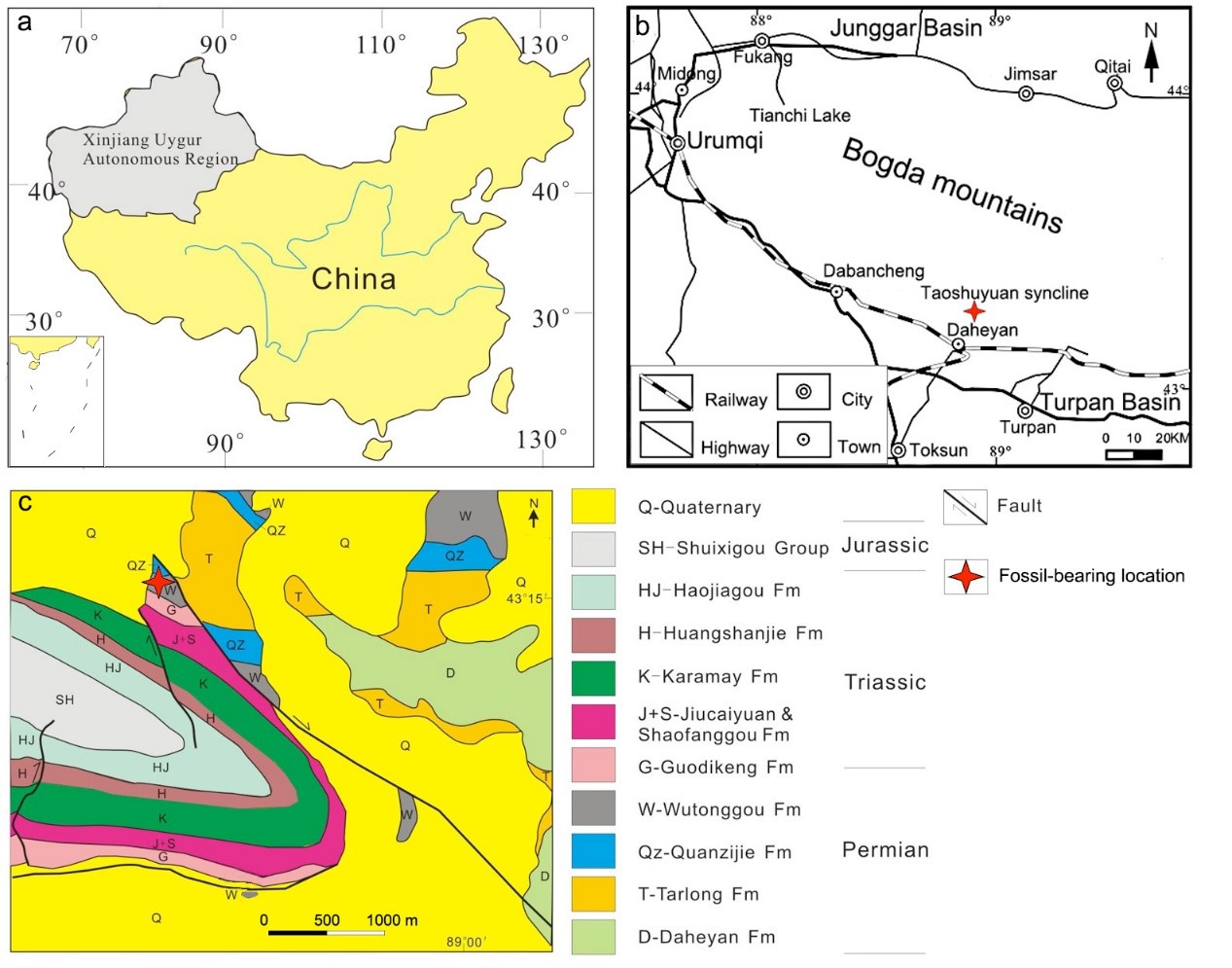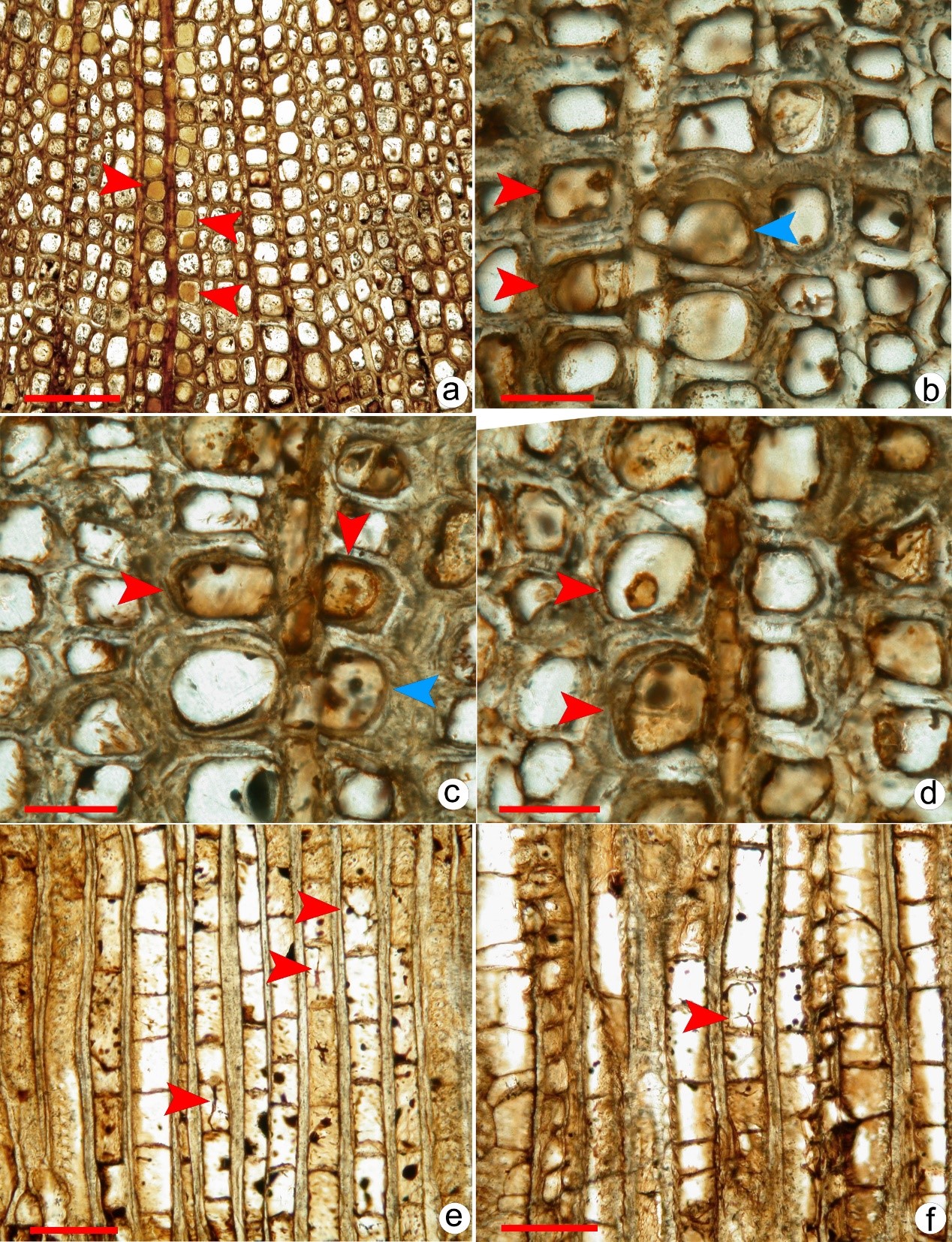Living plants have innate immune systems similar to animals. When a plant is invaded by pathogens, its immune system can quickly react in defense. So how did plants in geological history face the invasion of foreign pathogenic microorganisms? A 259 million-year-old plant fossil preserved in the Turpan Basin reveals how ancient plants dealt with foreign pathogens.
The Paleozoic Plant Research Team of the EPLENEA, conducted a field geological survey in Daheyan Town, Turpan, Xinjiang, and found a preserved piece in the early Late Permian about 259 million years ago. Intact silicified Cordaites root specimen.
Cordaites is a kind of extinct gymnosperm. It can be traced back to the Carboniferous to Permian, 250-350 million years ago, when Cordaites were found almost everywhere in the world. Complete Cordaites have been found in central Europe, north America and north in China. They are also the most important coal-forming materials in the Late Paleozoic. Cordaitesare mostly slender trees with a height of 15-30 meters, and there are also shrubs with a height of only 4-5 meters. The tall arbor type Cordaites partly grows on the high ground, and some grow in marshes and coastal zones. Some shrub type Cordaites may be the earliest sea-side mangrove community. The root of Cordaites is called Amyelon . As the name suggests, it is characterized by the lack of pith in the middle of the root.
The Cordaites root fossil specimens collected are about 11 cm long and 5 cm thick. The research team conducted anatomical studies on the specimens of plant fossils and found that it represents a new type of Koda root, named Amyelon turpanense.
The research team further studied this Cordaites root fossil and found that a large number of fungal hyphae were found in its tracheids (cells used to transport water and inorganic salts). These fungi are not beneficial symbiotic bacteria that coexist with plants, but parasitic bacteria that have a destructive effect on plant cells. A large number of fungal invasions, this strain of Cordaites also made a corresponding response, growing a large number of invaders from its ray cells to block tracheids: on the one hand, the invader cell wall acts as a physical barrier to prevent fungal extension, and on the other one hand, they block the flow of water in the tracheids, and organize the fungus to further multiply and spread. However, it seems that the resistance effect of these invaders is not ideal. The parasitic bacteria increase the contact area with the cell wall of the invaders through bifurcation and curling, and accelerate the decomposition of the invaders. At the same time, plants also secrete some resin liquid to try their best to resist fungal attack.
The silicified root fossil found in Daheyan Town, Turpan not only enriched the types of Cordaites roots, but also perfectly recorded the process of 259 million former Cordaites roots resisting foreign pathogens. It helped us to study fossil plants and pathogenic bacteria. The interaction provides new materials and evidence. Related research results "Tyloses in the Lopingian cordaitalean root from Xinjiang, Northwest China" were published online in November 2019 in the international journal "Review of Paleobotany and Palynology".


Fossil collection location Cells interact with fungi in Amyelon turpanense